Excess Federal Properties Map - October, 2011

Cutting Costs by Getting Rid of Buildings We Don't Need
This map visualizes a sampling of about 14,000 buildings and structures currently designated as excess. These properties range from sheds to underutilized office buildings and empty warehouses. Many of these assets will be disposed through demolition and transfers. Every excess asset taken off the books represents progress in the form of reduced operating and maintenance expenses, which cost the taxpayers almost $190 million a year.
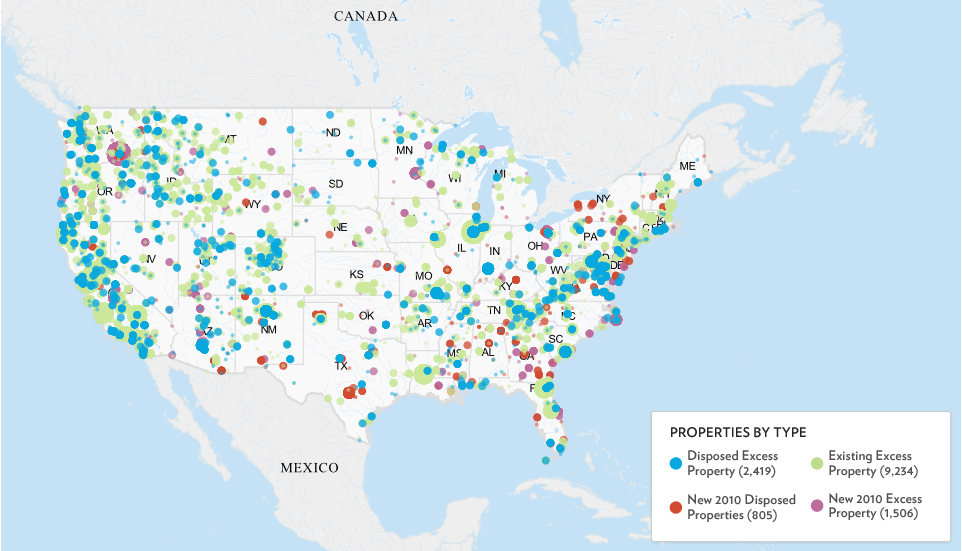
The Federal Government is the biggest property owner in the United States, and billions of taxpayer dollars are wasted each year on government properties that are no longer needed. The President has proposed an independent Civilian Property Realignment Board to help the Federal Government cut through red tape and competing stakeholder interests to sell or get rid of property it no longer needs. Over time, this could save taxpayers billions of dollars and help to reduce the deficit.
This map shows just the tip of the iceberg in terms of opportunities for downsizing the Federal real estate portfolio. Under the President’s proposal, more properties, in some cases with significant market value, would be added to this map and dealt with more quickly and effectively than they are today.
President Obama and Vice President Biden launched the Campaign to Cut Waste to eliminate misspent tax dollars in every agency and department across the Federal Government. Getting properties like those highlighted below off our books is a key first step in this effort.
Featured Properties

SOLD IN 2012
Size: 9,650 square feet on 1.39 acres
Sale Price: $1.1 million
The General Services Administration (GSA) sold the Hampton Roads Shore Patrol Building near Norfolk, VA, to the City of Norfolk for $1.1 million in November 2012. The Norfolk Sherriff's Department had been using a portion of the property as a joint training facility with the Navy's Shore Patrol since 1994 and will continue to utilize the property for administrative and training work.
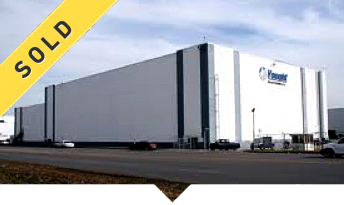
SOLD IN 2012
Size: 425 acres
Sale Price: $357,500
The General Services Administration sold the Naval Weapons Industrial Reserve Plant in Dallas for $357,500 in October 2012. The 425-acre facility, comprised of a 315-acre industrial area, 238 buildings and other structures and 110 acres of adjoining unimproved real property, was re-branded as the “Mountain Creek Industrial Center.” By requiring the new owner to complete the necessary environmental remediation, GSA and Navy were able to realize over $27 million in additional savings.
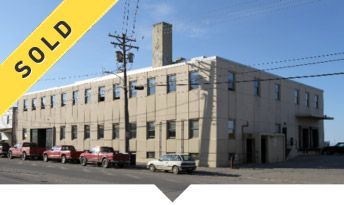
SOLD IN 2012
Size: Over 27,000 square feet
Sale Price: $1.68 million
The General Service Administration sold this two-story, 27,000 square foot office building at public sale for $1.68 million in February 2012. The largest tenant in the building was previously the Alaska State Courts. This building was first constructed in 1958, and is located in downtown Nome, Alaska. The building was first declared excess in 2009 and is slated for continued office use in downtown Nome.
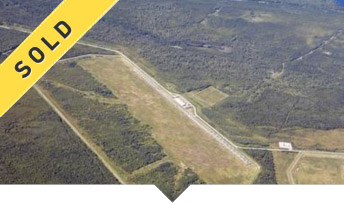
SOLD iN 2012
Size: Over 1,425 acres of land
Sale Price: $750,000
The General Service Administration sold this 1,425 acre piece of land, which used to be used as an Air Force radar site, in April 2012. The property contains 3 warehouse buildings that together represent approximately 44,000 square feet. This radar site previously functioned as part of a system of facilities used to track military targets across the Eastern seaboard. After a public auction, the Government sold this site for roughly $750,000.
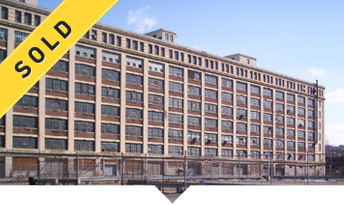
DISPOSED IN 2011
Size: 1,000,000 square feet
Sale Price: $10,000,000
The General Services Administration sold a 1 million square foot warehouse and parking lot sitting empty on six acres of land. The Navy had used this property for a Fleet supply base beginning in 1919 until after WWII. Several agencies called it home over the years, but this facility had been sitting empty for over 10 years since 2000, costing the federal government hundreds of thousands of dollars in upkeep. GSA was able to bring the property to a negotiated sale this year, which resulted in about $10,000,000 in proceeds for the Federal Government.
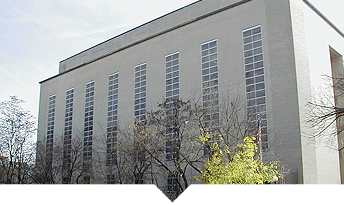
Size: 20,000 square feet on 2 acres
Potential Savings if Disposed: $3.5 million over 10 years
GSA commenced its auction to sell this property in January 2013. On March 12, 2013, GSA accepted a top bid of $19.5 million for the Georgetown Heating Plant. GSA is currently in the process of working with the top bidder, to finalize the sale. For more information see GSA’s news release.
Understanding Excess Properties
Of all the terms used in this map that deserve a full definition, most important is what is the definition of an "excess property"?
Excess properties can be any number of things: from office buildings to laboratories to storage sheds and warehouses. Excess property is property that an agency has identified as no longer needed for mission or program performance. When a building is "excess" it means that it can be offered to other Federal agencies. Even buildings that once served a humanitarian purpose, like family housing or schools, may be long-abandoned or out of use. When no need is found by a fellow Federal agency for the property, it then becomes "surplus." Surplus property is what is typically sold or disposed outside of the Federal Government.
Looking at the map, one may notice that some of the properties are inside of a national park, forest or otherwise protected natural resource. The identification of excess assets on park land or land identified as a preservation district does not mean that the Administration will be selling our natural treasures; we are trying to maintain our national parks and forests in a way that is more efficient and reduces the expense for the American people without affecting the commitment to the safeguarding of our public lands.
Properties whose location is sensitive, such as Department of Defense installations, are not represented on this map, but will go through the same review process.
Here are the different real property uses associated with these three categories, as defined by the GSA:
|
Real Property Use |
Definition |
|
Agriculture |
Land under cultivation for food or fiber production. |
|
All Other |
Properties that cannot be classified elsewhere. |
|
Communications Systems |
Telephone and telegraph lines, data cables, radio towers, and other communications-related properties |
|
Dormitories / Barracks |
Buildings primarily used for housing individuals (without families/dependents). |
|
Family Housing |
Buildings primarily used as housing for families/dependents. Includes apartment houses, single houses, row houses, public housing, military personnel housing, Federal employee housing, and housing for institutional personnel. |
|
Flood Control and Navigation |
Land used for flood control and navigation projects |
|
Harbors and Ports |
Docks, piers, wharves, jetties and breakwaters, and other harbor, port, or coastal facilities. |
|
Hospital |
Buildings used primarily for furnishing in-patient diagnosis and treatment under physician supervision and having 24-hour-a-day registered graduate nursing services. This category also includes medical laboratories used for routine testing. This category excludes buildings used directly in basic or applied medical research. |
|
Industrial |
Buildings specifically designed and primarily used for production or manufacturing, such as the production or manufacture of ammunition, aircraft, ships, vehicles, electronic equipment, fish production, chemicals, aluminum, and magnesium. Included are buildings that house utility plants or utility system components such as pump stations or valves. |
|
Industrial (other than buildings) |
Structures and facilities (other than buildings) used for production or manufacturing, such as sliding shipways, retaining basins, and pipelines. |
|
Institutional |
Land used for institutional purposes such as hospitals, prisons, schools, libraries, chapels, and museums. |
|
Laboratories |
Buildings used directly in basic or applied research in the sciences (including medicine) and in engineering, such as medical laboratories; meteorological research laboratories; and buildings used in designing, developing, and testing of prototypes and processes for chemistry and physics. This category excludes medical or industrial laboratories used for routine testing. |
|
Monuments and Memorials |
Federal monuments, memorials, and statues. |
|
Museum |
Buildings used for the housing and/or display of tangible objects or collections for the purpose of displaying said objects or collections for public view and benefit on a regular basis. |
|
Navigation and Traffic Aids |
Includes buildings that house aircraft or ship navigation and traffic aids, such as beacon lights, antenna systems, ground control approach systems, and obstruction lighting. |
|
Office |
Buildings primarily used for office space or military headquarters. |
|
Office Building Locations |
Land containing office buildings or future planned office buildings, to include military headquarters buildings. |
|
Other Institutional Uses |
Buildings used for institutional purposes other than schools, hospitals, and prisons, such as libraries, chapels, and out-patient clinics. This category also includes food preparation and dining facilities, buildings housing entertainment and recreational activities, and visitor’s centers. |
|
Parking Structures |
Independent structures for non-residential parking of more than two vehicles. |
|
Power Development and Distribution |
Land used for power development and distribution projects. |
|
Railroads |
Tracks, bridges, tunnels, and fuel or water stations servicing railroads. |
|
Reclamation and Irrigation |
Land used for reclamation and irrigation projects. |
|
Recreational (other than buildings) |
Outdoor recreational structures such as athletic fields and courts, stadiums, golf courses, and ski slopes. |
|
Research and Development |
Land used directly in basic or applied research, such as science, medicine, and engineering |
|
Research and Development (other than Laboratories) |
Structures and facilities used directly in basic or applied research in science, medicine, and engineering, such as facilities used in the design, development, and testing of prototypes and processes and space and aeronautics research and development. Excludes facilities used for routine testing. |
|
Roads and Bridges |
Federally-owned highways, roads, related culverts, and connecting bridges. Includes surfaced and unsurfaced roads within National parks and forests, military installations, and other Federal installations. |
|
School |
Buildings used primarily for formally organized instruction, such as schools for dependent children of Federal employees, Indian schools, and military training buildings including specialized training facilities. |
|
Service |
Buildings used for service activities, such as maintenance and repair shops, dry cleaning plants, post exchange stores, airport hangars, and buildings primarily used for vehicle maintenance and repair. |
|
Service (other than buildings) |
Structures used for maintenance and repair, such as underground fueling systems, vehicle washing and greasing facilities, aircraft bore sight ranges, guided missile maintenance facilities, and ship repair structures. |
|
Storage |
Land used primarily for supply depots and other storage. |
|
Storage (other than buildings) |
Storage tanks, silos, igloos, underground vaults, and open storage improved areas. This category includes water reservoirs and POL storage tanks. |
|
Utility Systems |
Heating, sewage, water, and electrical systems that serve several buildings or other structures of an installation. Includes heating plants and related steam and gas lines, sewage disposal plants, storm and sanitary sewer lines, water treatment plants, wells, pump houses, reservoirs, and pipelines. Also includes electrical substations, standby or auxiliary power plants, lighting structures, and conduits. |
|
Vacant |
Land not being used. |
|
Warehouses |
Buildings used for storage, such as ammunition storage, covered sheds, and buildings primarily used for storage of vehicles or materials. Also included are underground or earth covered ammunition storage bunkers and magazines. This category excludes water reservoirs and POL storage tanks which are storage structures. |
|
Weapons Ranges |
Ranges where weapons are fired and areas where explosives are detonated. |

Cutting Costs by Getting Rid of Buildings We Don't Need
This map visualizes a sampling of about 14,000 buildings and structures currently designated as excess. These properties range from sheds to underutilized office buildings and empty warehouses. Many of these assets will be disposed through demolition and transfers. Every excess asset taken off the books represents progress in the form of reduced operating and maintenance expenses, which cost the taxpayers almost $190 million a year.

The Federal Government is the biggest property owner in the United States, and billions of taxpayer dollars are wasted each year on government properties that are no longer needed. The President has proposed an independent Civilian Property Realignment Board to help the Federal Government cut through red tape and competing stakeholder interests to sell or get rid of property it no longer needs. Over time, this could save taxpayers billions of dollars and help to reduce the deficit.
This map shows just the tip of the iceberg in terms of opportunities for downsizing the Federal real estate portfolio. Under the President’s proposal, more properties, in some cases with significant market value, would be added to this map and dealt with more quickly and effectively than they are today.
President Obama and Vice President Biden launched the Campaign to Cut Waste to eliminate misspent tax dollars in every agency and department across the Federal Government. Getting properties like those highlighted below off our books is a key first step in this effort.
Featured Properties

SOLD IN 2012
Size: 9,650 square feet on 1.39 acres
Sale Price: $1.1 million
The General Services Administration (GSA) sold the Hampton Roads Shore Patrol Building near Norfolk, VA, to the City of Norfolk for $1.1 million in November 2012. The Norfolk Sherriff's Department had been using a portion of the property as a joint training facility with the Navy's Shore Patrol since 1994 and will continue to utilize the property for administrative and training work.

SOLD IN 2012
Size: 425 acres
Sale Price: $357,500
The General Services Administration sold the Naval Weapons Industrial Reserve Plant in Dallas for $357,500 in October 2012. The 425-acre facility, comprised of a 315-acre industrial area, 238 buildings and other structures and 110 acres of adjoining unimproved real property, was re-branded as the “Mountain Creek Industrial Center.” By requiring the new owner to complete the necessary environmental remediation, GSA and Navy were able to realize over $27 million in additional savings.

SOLD IN 2012
Size: Over 27,000 square feet
Sale Price: $1.68 million
The General Service Administration sold this two-story, 27,000 square foot office building at public sale for $1.68 million in February 2012. The largest tenant in the building was previously the Alaska State Courts. This building was first constructed in 1958, and is located in downtown Nome, Alaska. The building was first declared excess in 2009 and is slated for continued office use in downtown Nome.

SOLD iN 2012
Size: Over 1,425 acres of land
Sale Price: $750,000
The General Service Administration sold this 1,425 acre piece of land, which used to be used as an Air Force radar site, in April 2012. The property contains 3 warehouse buildings that together represent approximately 44,000 square feet. This radar site previously functioned as part of a system of facilities used to track military targets across the Eastern seaboard. After a public auction, the Government sold this site for roughly $750,000.

DISPOSED IN 2011
Size: 1,000,000 square feet
Sale Price: $10,000,000
The General Services Administration sold a 1 million square foot warehouse and parking lot sitting empty on six acres of land. The Navy had used this property for a Fleet supply base beginning in 1919 until after WWII. Several agencies called it home over the years, but this facility had been sitting empty for over 10 years since 2000, costing the federal government hundreds of thousands of dollars in upkeep. GSA was able to bring the property to a negotiated sale this year, which resulted in about $10,000,000 in proceeds for the Federal Government.

Size: 20,000 square feet on 2 acres
Potential Savings if Disposed: $3.5 million over 10 years
GSA commenced its auction to sell this property in January 2013. On March 12, 2013, GSA accepted a top bid of $19.5 million for the Georgetown Heating Plant. GSA is currently in the process of working with the top bidder, to finalize the sale. For more information see GSA’s news release.
Understanding Excess Properties
Of all the terms used in this map that deserve a full definition, most important is what is the definition of an "excess property"?
Excess properties can be any number of things: from office buildings to laboratories to storage sheds and warehouses. Excess property is property that an agency has identified as no longer needed for mission or program performance. When a building is "excess" it means that it can be offered to other Federal agencies. Even buildings that once served a humanitarian purpose, like family housing or schools, may be long-abandoned or out of use. When no need is found by a fellow Federal agency for the property, it then becomes "surplus." Surplus property is what is typically sold or disposed outside of the Federal Government.
Looking at the map, one may notice that some of the properties are inside of a national park, forest or otherwise protected natural resource. The identification of excess assets on park land or land identified as a preservation district does not mean that the Administration will be selling our natural treasures; we are trying to maintain our national parks and forests in a way that is more efficient and reduces the expense for the American people without affecting the commitment to the safeguarding of our public lands.
Properties whose location is sensitive, such as Department of Defense installations, are not represented on this map, but will go through the same review process.
Here are the different real property uses associated with these three categories, as defined by the GSA:
|
Real Property Use |
Definition |
|
Agriculture |
Land under cultivation for food or fiber production. |
|
All Other |
Properties that cannot be classified elsewhere. |
|
Communications Systems |
Telephone and telegraph lines, data cables, radio towers, and other communications-related properties |
|
Dormitories / Barracks |
Buildings primarily used for housing individuals (without families/dependents). |
|
Family Housing |
Buildings primarily used as housing for families/dependents. Includes apartment houses, single houses, row houses, public housing, military personnel housing, Federal employee housing, and housing for institutional personnel. |
|
Flood Control and Navigation |
Land used for flood control and navigation projects |
|
Harbors and Ports |
Docks, piers, wharves, jetties and breakwaters, and other harbor, port, or coastal facilities. |
|
Hospital |
Buildings used primarily for furnishing in-patient diagnosis and treatment under physician supervision and having 24-hour-a-day registered graduate nursing services. This category also includes medical laboratories used for routine testing. This category excludes buildings used directly in basic or applied medical research. |
|
Industrial |
Buildings specifically designed and primarily used for production or manufacturing, such as the production or manufacture of ammunition, aircraft, ships, vehicles, electronic equipment, fish production, chemicals, aluminum, and magnesium. Included are buildings that house utility plants or utility system components such as pump stations or valves. |
|
Industrial (other than buildings) |
Structures and facilities (other than buildings) used for production or manufacturing, such as sliding shipways, retaining basins, and pipelines. |
|
Institutional |
Land used for institutional purposes such as hospitals, prisons, schools, libraries, chapels, and museums. |
|
Laboratories |
Buildings used directly in basic or applied research in the sciences (including medicine) and in engineering, such as medical laboratories; meteorological research laboratories; and buildings used in designing, developing, and testing of prototypes and processes for chemistry and physics. This category excludes medical or industrial laboratories used for routine testing. |
|
Monuments and Memorials |
Federal monuments, memorials, and statues. |
|
Museum |
Buildings used for the housing and/or display of tangible objects or collections for the purpose of displaying said objects or collections for public view and benefit on a regular basis. |
|
Navigation and Traffic Aids |
Includes buildings that house aircraft or ship navigation and traffic aids, such as beacon lights, antenna systems, ground control approach systems, and obstruction lighting. |
|
Office |
Buildings primarily used for office space or military headquarters. |
|
Office Building Locations |
Land containing office buildings or future planned office buildings, to include military headquarters buildings. |
|
Other Institutional Uses |
Buildings used for institutional purposes other than schools, hospitals, and prisons, such as libraries, chapels, and out-patient clinics. This category also includes food preparation and dining facilities, buildings housing entertainment and recreational activities, and visitor’s centers. |
|
Parking Structures |
Independent structures for non-residential parking of more than two vehicles. |
|
Power Development and Distribution |
Land used for power development and distribution projects. |
|
Railroads |
Tracks, bridges, tunnels, and fuel or water stations servicing railroads. |
|
Reclamation and Irrigation |
Land used for reclamation and irrigation projects. |
|
Recreational (other than buildings) |
Outdoor recreational structures such as athletic fields and courts, stadiums, golf courses, and ski slopes. |
|
Research and Development |
Land used directly in basic or applied research, such as science, medicine, and engineering |
|
Research and Development (other than Laboratories) |
Structures and facilities used directly in basic or applied research in science, medicine, and engineering, such as facilities used in the design, development, and testing of prototypes and processes and space and aeronautics research and development. Excludes facilities used for routine testing. |
|
Roads and Bridges |
Federally-owned highways, roads, related culverts, and connecting bridges. Includes surfaced and unsurfaced roads within National parks and forests, military installations, and other Federal installations. |
|
School |
Buildings used primarily for formally organized instruction, such as schools for dependent children of Federal employees, Indian schools, and military training buildings including specialized training facilities. |
|
Service |
Buildings used for service activities, such as maintenance and repair shops, dry cleaning plants, post exchange stores, airport hangars, and buildings primarily used for vehicle maintenance and repair. |
|
Service (other than buildings) |
Structures used for maintenance and repair, such as underground fueling systems, vehicle washing and greasing facilities, aircraft bore sight ranges, guided missile maintenance facilities, and ship repair structures. |
|
Storage |
Land used primarily for supply depots and other storage. |
|
Storage (other than buildings) |
Storage tanks, silos, igloos, underground vaults, and open storage improved areas. This category includes water reservoirs and POL storage tanks. |
|
Utility Systems |
Heating, sewage, water, and electrical systems that serve several buildings or other structures of an installation. Includes heating plants and related steam and gas lines, sewage disposal plants, storm and sanitary sewer lines, water treatment plants, wells, pump houses, reservoirs, and pipelines. Also includes electrical substations, standby or auxiliary power plants, lighting structures, and conduits. |
|
Vacant |
Land not being used. |
|
Warehouses |
Buildings used for storage, such as ammunition storage, covered sheds, and buildings primarily used for storage of vehicles or materials. Also included are underground or earth covered ammunition storage bunkers and magazines. This category excludes water reservoirs and POL storage tanks which are storage structures. |
|
Weapons Ranges |
Ranges where weapons are fired and areas where explosives are detonated. |